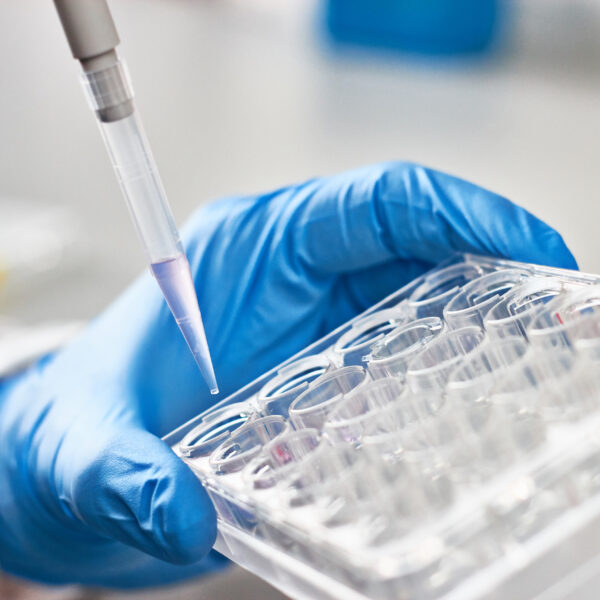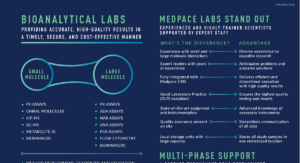
Experienced Lab in Developing NAb Assays
Medpace Bioanalytical Laboratories has a biosafety level II cell culture lab which is used to develop cell-based neutralizing antibody (NAb) assays. Detection of drug activity can be accomplished in a variety of ways, such as using a fluorescent reporter gene, performing enzymatic activity assays, or combination of a ligand binding assay. The cell biology experts at Medpace can develop a well-functioning cell-based NAb assay that perform flawlessly for your drug. Ligand Binding Assays (ELISA and MSD) and enzymatic activity assays are also routinely performed at MBL.
Neutralizing Antibody (NAb) Assays
When performing immunogenicity testing, it is often necessary to evaluate if the anti-drug antibodies (ADA) that a subject produces against the protein therapeutic neutralizes the drug. If the drug is neutralized, it becomes ineffective at treating the indication it was designed to treat. Most often, neutralizing antibody assays are performed as cell-based assays, but ligand binding and enzymatic activity NAb assays can also be conducted. Medpace Bioanalytical Laboratories has extensive experience developing, validating and performing cell-based, ligand binding, and enzymatic activity NAb assays.
Cell-Based NAb Assays
Cell-based assays are the preferred method for developing neutralizing antibody assays because a well-developed cell-based assay has the potential of testing multiple functional domains within a protein therapeutic with a single assay. Because proteins are large three-dimensional complex structures with multiple functional domains, a neutralizing antibody could potentially inhibit any one of these domains by binding to key parts within the domain and then render the entire drug ineffective. A well-developed cell-based assay would be able to detect a decrease in drug’s overall activity and therefore determine if ADAs are neutralizing the drug.
To perform a cell-based NAb assay, anti-drug antibodies from a subject and the protein therapeutic are added to cells in culture. The assay should be designed in a way that all functional domains are involved and the overall activity of the drug is able to be measured. If the activity of the drug decreases when patient antibodies are added, then those antibodies have a neutralizing effect on the drug. Medpace Bioanalytical Laboratories has the expertise required to develop, validate, and perform cell-based NAb assays for your biological products.
Ligand Binding NAb Assays
In some cases, a ligand binding NAb assays may be appropriate. Drugs, such as monoclonal clonal antibodies, could be inhibited by anti-drug antibodies produced by the subject. For example, a study showing that a particular monoclonal antibody drug has decreased binding of the drug target in the presence of subject’s anti-drug antibodies could be sufficient to show that the ADA produced by the subject are neutralizing the drug.
Enzymatic Activity NAb Assays
Some protein therapeutics are enzymes and the activity of enzymes can be measured by designing an enzymatic activity assay. If the enzymatic activity of the drug decreases in the presence of a subject’s anti-drug antibodies, then the drug is being neutralized by the ADAs.
Development and Validation
Medpace Bioanalytical Laboratories is staffed with highly experienced PhD scientists who are experts at method development and validation. The development of a neutralizing antibody assay is often specific to a particular drug candidate and requires a thorough understanding of the large molecule therapeutic. The pharmacodynamics of the drug candidate would need to be investigated prior to development and the mechanism of action (MOA) understood. All functional domains of the protein should be identified and characterized so that the neutralizing antibody assays can assess the activity of all functional domains together.
Validation of NAb assays are required and would follow pertinent regulatory needs. The FDA requires a minimum of 30 samples tested on at least three different days by at least two analysts to determine the cut-point. Parameters such as sensitivity, specificity, precision, and other relevant validation parameters should be evaluated.


